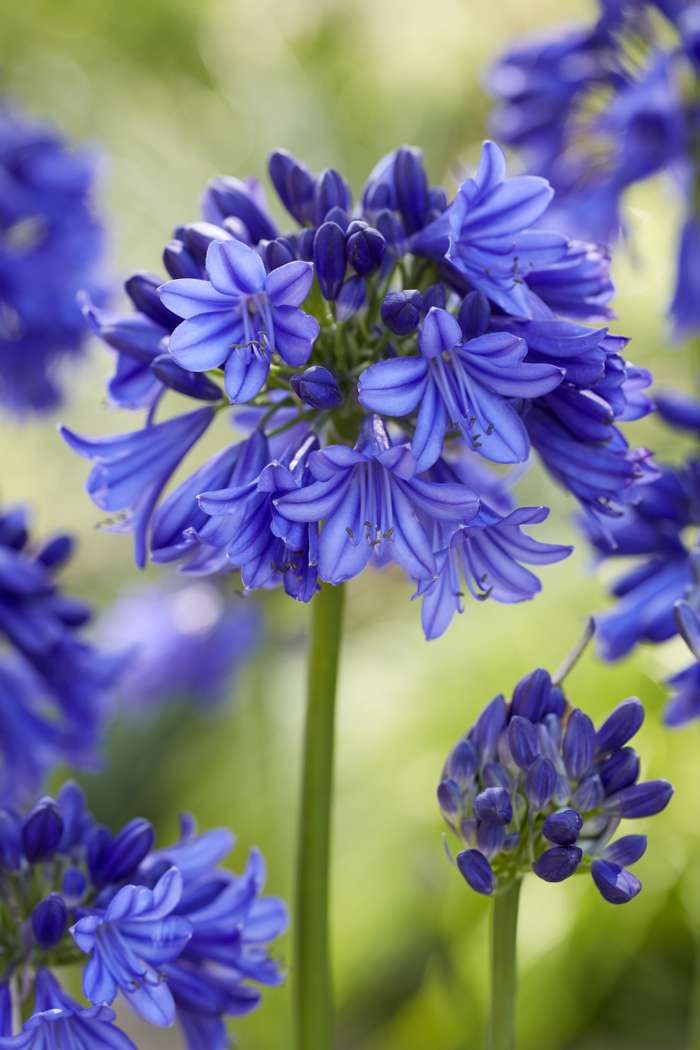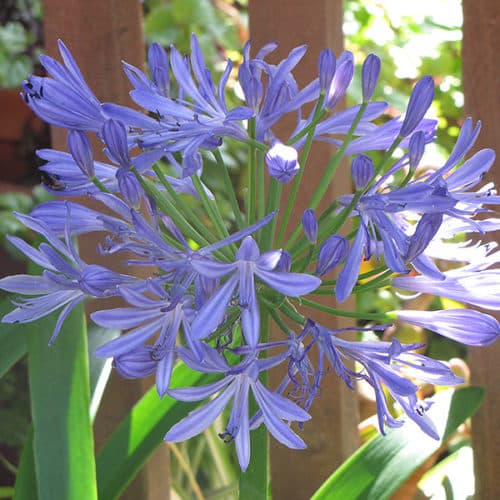Expanding Agapanthus: A Complete Guide to Beautiful Blooms
Expanding Agapanthus: A Complete Guide to Beautiful Blooms
Blog Article
Unleashing the Secret to Effective Agapanthus Cultivation: Idea for a Flourishing Garden
In the realm of horticulture, growing agapanthus efficiently requires a tactical technique that encompasses various aspects of plant treatment. By recognizing the subtleties of agapanthus farming, one can create an environment where these plants flourish and bloom generously.
Growing Agapanthus: Finest Practices
When growing Agapanthus, correct dirt preparation is necessary for guaranteeing successful growth and advancement of these lovely flowers. Agapanthus, typically called Lily of the Nile or African lily, prospers in well-draining dirt with a somewhat acidic to neutral pH degree - Agapanthus. Prior to planting, it is crucial to modify hefty clay dirts with organic issue such as garden compost or peat moss to boost drain and provide vital nutrients for the plants
To plant Agapanthus, select a place that obtains complete sunlight to partial shade, as this will certainly promote healthy development and bountiful flowering. Dig a hole twice the diameter of the plant's root sphere and place the Agapanthus at the very same depth it was previously expanding. Carefully backfill the opening with soil, pushing down securely to eliminate any kind of air pockets around the roots.
Water the recently planted Agapanthus thoroughly and remain to keep the soil equally moist, particularly throughout the plant's energetic expanding period. Agapanthus. Using a balanced plant food once a month can additionally support the plant's growth and flowering. By adhering to these finest methods for growing Agapanthus, you can produce a spectacular screen of these fascinating flowers in your garden
Suitable Soil Issues for Agapanthus
For optimum growth and blooming success of Agapanthus plants, guaranteeing the soil conditions are excellent is vital. Agapanthus prospers in well-draining soil with a slightly acidic to neutral pH degree varying from 6.0 to 7.0. This sort of soil enables adequate water drain, preventing waterlogging which can cause root rot. To boost dirt water drainage, consider adding organic issue such as compost or peat moss when preparing the growing site. Moreover, Agapanthus favors dirt that is rich in nutrients, so incorporating a well balanced plant food throughout the expanding period can promote healthy growth and vibrant flowers.

Watering and Fertilizing Tips
To make certain healthy development and lively blossoms, correct watering and fertilizing methods are necessary for successful Agapanthus farming. Agapanthus plants profit from routine watering, particularly during the expanding period.
When it pertains to feeding Agapanthus, a balanced plant food with equal components nitrogen, phosphorus, and potassium can be applied in the spring to promote healthy growth and blooming. Slow-release fertilizers are optimal for providing nutrients gradually over a prolonged period. Stay clear of over-fertilizing, as this can cause too much foliage growth at the expense of flowers.
Furthermore, including raw material like compost into the dirt can enhance nutrient levels and enhance soil structure, aiding in the general health of the Agapanthus plants. By following these watering and feeding suggestions, garden enthusiasts can guarantee their Agapanthus plants grow and generate magnificent screens of blossoms.
Pruning and Deadheading Methods
Appropriate trimming and deadheading strategies play a critical duty in keeping the wellness and appearances of Agapanthus plants, enhancing the important practices of watering and fertilizing for effective cultivation. Trimming Agapanthus includes removing invested blossom heads, dead or yellowing fallen you can check here leaves, and overall shaping of the plant to advertise much better growth. Deadheading, the procedure of removing discolored blossoms, not only boosts the plant's look yet also urges more flowering.
When deadheading Agapanthus, it is recommended to clip off the blossom stem at the base making use of sharp, tidy shears. This process redirects the plant's energy from seed manufacturing back right into root and vegetation development, advertising a healthier and more robust plant. Normal deadheading can prolong the blooming period of Agapanthus and stop self-seeding, which can bring about overcrowding.
In regards to pruning, Agapanthus typically gain from a light trim after blossoming to clean the plant and urge fresh growth. Cutting down the invested blossom stems and eliminating any damaged or dead foliage aids preserve the plant's vitality and general look. However, it is necessary to prevent cutting right into the crown of the plant, as this can damage its health.

Protecting Agapanthus From Vermins and Diseases
Carrying out efficient pest see post and condition administration techniques is vital to securing the wellness and vitality of Agapanthus plants in growing. Agapanthus are normally sturdy plants, but they can still come down with different pests and diseases if not correctly looked after. One typical insect that influences Agapanthus is the Agapanthus borer, a caterpillar that tunnels into the plant, creating damages to the fallen leaves and blossoms. To prevent infestations, routine examination of the plants is essential. If borers are identified, they can be manually gotten rid of, or insecticidal soap can be utilized as a control measure. look at more info
In addition to bugs, Agapanthus are prone to illness such as origin rot and fungal fallen leave areas. By staying watchful and attending to pest and disease concerns without delay, garden enthusiasts can assist their Agapanthus prosper and grow.

Verdict
Finally, effective cultivation of agapanthus needs proper growing techniques, suitable soil problems, sufficient watering and feeding, regular pruning and deadheading, and defense from conditions and pests. By complying with these tips and techniques, gardeners can guarantee a growing garden full of gorgeous agapanthus flowers. Agapanthus. Bear in mind to preserve constant treatment and attention to detail to advertise the health and long life of these stunning plants
When planting Agapanthus, proper soil prep work is essential for guaranteeing effective development and growth of these stunning blossoms.Water the freshly planted Agapanthus extensively and continue to maintain the dirt equally wet, especially during the plant's energetic expanding period.For optimal growth and blooming success of Agapanthus plants, guaranteeing the soil conditions are suitable is crucial. When transplanting or planting Agapanthus, ensure the dirt is well-prepared to provide the required foundation for the plants to establish themselves successfully. One typical bug that impacts Agapanthus is the Agapanthus borer, a caterpillar that passages right into the plant, triggering damages to the leaves and flowers.
Report this page